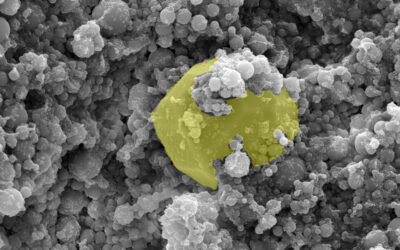Hear the word “fuel-cell”, and one would be inclined to imagine complex machines containing toxic chemicals that generate electricity by harnessing chemical reactions. Not something that you might one day want to implant inside your own body. But this is not science-fiction; biofuel cells are stepping into the scene of clean-energy production, and even in vivo energy production.
An implantable biofuel cell based on the conversion of glucose, present in physiological fluids, to gluconolactone is presented by Zebda et al in Nature Communications. Enzymes glucose oxidase and laccase are mixed with carbon nanotubes (CNTs) to make a composite bioanode and biocathode respectively. In both instances no linker or mediator molecule is used to facilitate the direct electron transfer (DET) from the enzyme to the conductive CNT network. Nevertheless, this does not lead to any reduction in performance and in doing so increases the theoretical long-term stability of these systems. Such mediators can lead to life-time reductions, not to mention more complex fabrication methods.
The measured cathodic and anodic currents match the respective expected reductions and oxidations, implying the presence of an effective DET process at both electrodes. The use of an additional enzyme, catalase, at the anode was however required to achieve a maximum current. This is due to parasitic hydrogen peroxide production that can occur.
The required voltage output for feasible implementation of such devices is between 0.5 and 0.6V. The devices presented here achieve a maximum voltage of 1.2V. More importantly, the devices could maintain an output voltage over the required threshold even after prolonged times in physiological environments.
Image courtesy of www.istockphoto.com
















